
(Photos: Jonathan Maus/BikePortland)
It just so happens that many of the roads managed by Multnomah County are vital links in the cycling network: Sauvie Island Road, Larch Mountain Road, Skyline Road, Cornell, Marine Drive, Historic Columbia River Highway, and so on.
We don’t talk about them as much as urban infrastructure and commuting routes, but that makes them no less important. And now, as part of an update to their 20-Year Road Capital Improvement Plan (CIP), the County needs to hear from you how to prioritize future projects and funding. An online open house is now available and comments can be made through March 4th.
(From a summary of feedback about the Roads CIP prepared by Multnomah County )
The good news is, the County has already heard loud and clear that safety in general — and especially conditions for people on foot and on bikes — should be the top priority. In a recent survey, over half of all comments received mentioned bicycling and walking. When asked roads with “problem spots,” 56 different roads were mentioned. Skyline Boulevard was at the top with 38 mentions. The County summarized concerns on Skyline as it being, “Too narrow for motor and non-motor users to safely mix. Speeds too high. Poor sight lines at intersections.” All of those concerns are directly related to cycling safety. Cornell Road, another popular biking route that heads into the hills directly from downtown Portland, was also mentioned as being too narrow for bicycle and car users to safely mix.
When given a list of 15 priorities and asked which ones the County should focus on, “preventing collisions” received the most support. It was followed very closely by “Make it safer to walk and bike.” At the bottom of the list? “Increase capacity” (see above).
And what’s even more interesting about the feedback the County has heard thus far is that out of over 200 respondents at open houses is that 123 of them said their primary mode of transportation is a car.
Advertisement
To make bicycling safer on their roads, current projects on the CIP list would take a variety of steps including: widen and pave shoulders where possible, build uphill climbing lanes, create more pullouts to improve passing safety, and even full-length bike lanes where none currently exist.
Here are just a few examples of projects listed on the CIP that have significant cycling elements:
Larch Mountain Road (Project 135R)
Provide separation for bicycles where warranted and/or feasible. Improvements could include narrow shoulders to full width shoulders (6 feet) in one or both directions or could include minimal improvements such as uphill bicycle climbing lanes. Project may also include safety improvements such as additional guardrail.Forest Park/SW Hills (Project 513U)
Construct bicycle lanes on streets within the Forest Park/SW Hills unincorporated urban pocket. Road segments include: Hewitt Blvd: Humphrey Blvd–5200 W of Patton Rd; Humphrey Blvd: Patton Rd–Hewitt Blvd; Patton Rd: Scholls Ferry Rd–Hewitt Ave, Shattuck Rd: Patton Rd–Windsor Ct; and NW Miller Ave.Hurlburt Road: Historic Columbia River Highway – Littlepaige Road (Project 131R)
Provide separation for bicycles where warranted and/or feasible on SE Hurlburt Road between Historic Columbia River Highway and SE Littlepaige Road. Improvements could include narrow shoulders (3-4 feet) to full width shoulders (6 feet) in one or both directions or could include minimal improvements such as uphill bicycle climbing lanes or intermittent bicycle pull outs. Solutions can be used for pedestrian use (i.e., shoulders).Skyline Blvd (Project 166R)
Provide safety improvements along NW Skyline Boulevard between the City of Portland boundary and NW Cornelius Pass Road, such as augmenting shoulders in a context‐sensitive manner and providing enhanced shoulder bikeways. Project also includes installing traffic calming devices to reduce speeds to be consistent with recommendations of future speed zone study.Springville Road (Project 170R)
Provide safety improvements on NW Springville Road between the City of Portland limits and the Washington County line such as augmenting shoulders in a context-sensitive manner and providing shoulder bikeways. Project must also be consistent with on-street bike/ped option in the Westside Trail Master Plan.Cornell Rd (Project 113R)
For NW Cornell Road, provide separation for bicycles where warranted and/or feasible. Improvements could include narrow shoulders (3-4 feet) to full width shoulders (6 feet) in one or both directions or could include minimal improvements such as uphill bicycle climbing lanes or intermittent bicycle pull outs. Solutions can be used for pedestrian use (i.e., shoulders).Sauvie Island Loop Roads (Project 163R)
Provide 3-4 foot paved shoulders on NW Reeder Road, NW Sauvie Island Road, and NW Gillihan Road.
I strongly recommend taking a few minutes to go through the online open house to help the County understand why these projects are important to you. Deadline for input is March 4th!
— Jonathan Maus: (503) 706-8804, @jonathan_maus on Twitter and jonathan@bikeportland.org
Never miss a story. Sign-up for the daily BP Headlines email.
BikePortland needs your support.



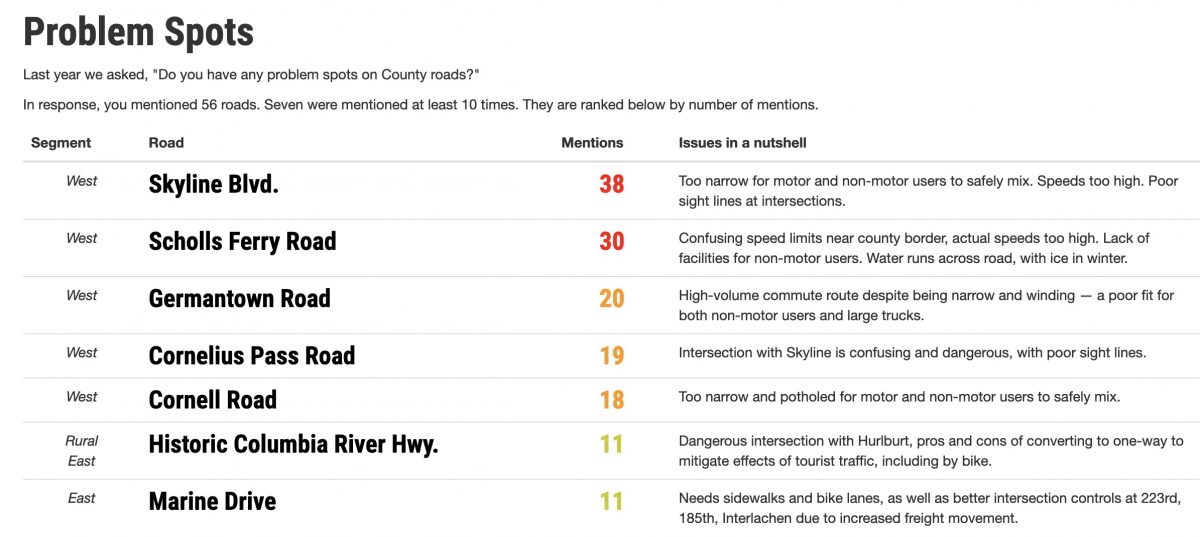

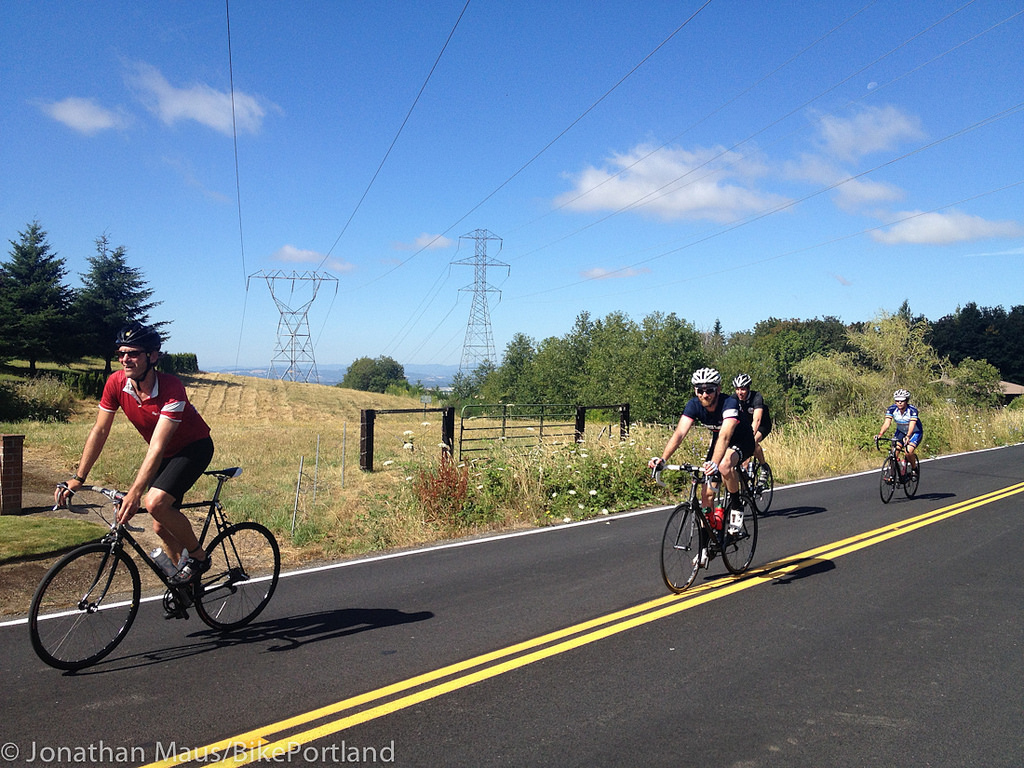
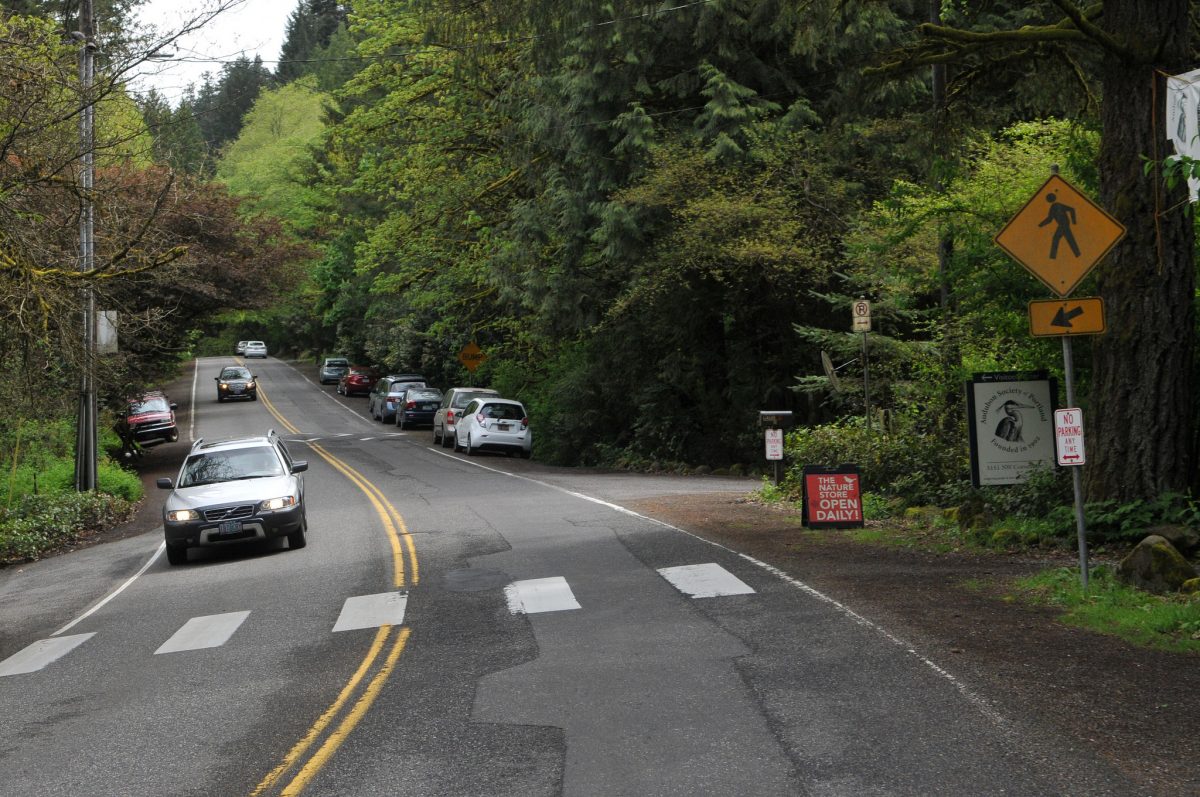


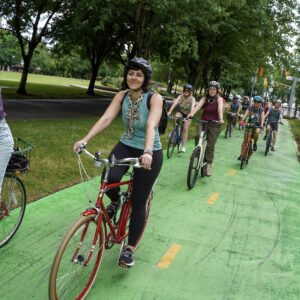
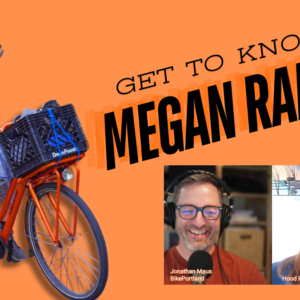

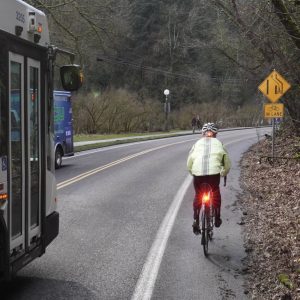
Thanks for reading.
BikePortland has served this community with independent community journalism since 2005. We rely on subscriptions from readers like you to survive. Your financial support is vital in keeping this valuable resource alive and well.
Please subscribe today to strengthen and expand our work.
Thanks for writing about this JM. I wasn’t aware about this.
That was an odd survey. Widen the travel lanes on Germantown road? Make Marine Drive 5 lanes? I thought Washington county was bad… so many of these projects don’t improve safety of VRUs. Please fill out the survey and when you select 5 priority projects, in the text box below ask them to focus on improving active transit before they default to widening roads. Given the project list, I am somewhat pessimistic.
you’re welcome. And good points. I think the general stance of County is that many of their roads are old and rural in nature and they see a future with more growth and traffic so they want to bring the roads up to current standards. And to them, that usually means adding capacity… But that also means adding sidewalks and bike lanes (that don’t exist now).
We just haven’t shifted the overton window for traffic culture far enough yet where agencies like Multnomah County are in the “no capacity increase” mindset (despite the fact that when asked in surveys their own constituents – or at least the ones who care enough to show up – say that more capacity isn’t a priority!).
I want to echo my thanks and similar concerns about the whole idea of capacity. Just finished my survey and the comment I left with was focusing on total capacity – so including people on foot and bike as part of the math. All too often capacity is thought of in terms of number of cars which helps to sell the concept of building more auto lanes. We will need to move more people on our roads as the population increases but they don’t have to be in SOVs. Capacity is not bad if it includes more than cars, we just have to help get them to that point for now.
I think it might mean to make a shoulder space, especially when a person is riding a bike uphill, in a certain section like when the road is in a straight-line. It would be like the shoulder space and striping that was built around 2013 on SW Maplewood Road in SW Portland.
Jonathan, thank you for promoting this survey.
I ride the roads mentioned fairly occasionally.
For the Gorge-area roads, I don’t feel the roads are the actual issue – but they could be better. It’s not a matter of congestion – the issue (IMO) is that drivers treat those roads as recreational and drive way too fast for them.
Obviously, separate bike paths would help (but probably not feasible for the number of cyclists) but I don’t think separate lanes will make much of a difference. Drivers are crossing lines already and it’s because they are driving too fast. Adding a bike lane would simply add a few more feet for a driver to take a wider turn on.
Skyline and Cornell suffer from congestion AND recreational Knuckleheads. There is much more private property along those roads so I am wondering what kind of options there are for adding additional pavement. I do like the idea of traffic slowing measures on Skyline – I never feel safe riding the portion east of CPR.
How about SW Scholls Ferry Road between Sylvan and basically SW Hamilton Street? Skyline does have some vegetation that grows far past the edge of the pavement at eye-level.
I’ve never ridden that on my bike so I can’t attest to it.
I have reported the vegetation at eye level on Skyline several times this winter. No luck. MultCo / PBOT if you’re reading please take note. It wasn’t so bad when the branches were in leaf but when they’re bare and you have many demands on your attention they are a hazard.
yessssss! thanks for sharing…some of my personal favorite roads to ride
Easy solution: make skyline a single lane and 20mph with bike only lanes on outer half of each current lane that drivers must yield to cyclists before using to negotiate oncoming traffic… heck do this for just about every road along the west hills.
That’s not really reasonable.
You mean this isn’t done in the US and drivers would complain about it.
If that is what I meant, I would have stated it that way.
“so you’re saying”…
Skyline within the City of Portland is supposed to be 20MPH under the new law and ordinance. So far there is no indication that PBOT intends to comply.
PBOT website says NW Skyline is 30 mph from Burnside to Cornell. It was lowered in 2018 from 40 to 35 mph from Cornell to city limits near about Newberry Road. SW Skyline is 25.
The problem is regardless what speed is posted there is zero enforcement. Locals have practically gotten on their knees and begged the cops to put a radar van up there. They’ve refused. So drivers, knowing they won’t get a ticket, continue to drive even the 25mph zones at 50.
Multnomah County Sheriff has confirmed they have just one officer on patrol for the entire westside of the county.
I think this could be done on Logie Trail with almost no impact to drivers.
The bike lanes on windy roads always have the paint rubbed away from people using all available road space to drive. Widening these roads will only increase vehicle speeds now that the roadbed accommodates faster speeds. People see shoulder to shoulder and drive accordingly. Be careful what you wish for.
I agree: slow Skyline down, don’t widen it. I met a surgeon once who lives on Skyline (and doesn’t bike) who commented to me that he figures Skyline must be “littered with dead bicyclists.” His phrase not mine, and I think it reflects a common misunderstanding. To my knowledge which goes back roughly 20 years, nobody has ever been killed cycling on Skyline. The VZ Crash Map (data from Portland to Newberry/Macnamee) is consistent with that: No deaths and 4 injuries in 10 years. Nobody is texting except on the few straightaways because you’d drive off the road. Likewise if you’re driving drunk you won’t make it very far. There aren’t many intersections. The curves keep speeds much lower than on other thru routes in the area. The people who ride up there tend to be almost as fast as the vehicles (most of them, in most places), which means a relatively small speed differential. There’s poor separation but it’s a gradual approach, with more time to avoid a crash, and lesser injury if a driver did god forbid rear-end somebody. My only near miss up there in 18 years was a (near) left hook: driver coming the other way turning left into her driveway apparently didn’t see 4 riders wearing hi-viz with 500-lumen flashing daytime headlights. I’ve seen some very bad passes. I’ve seen the aftermath of roadway departure crashes. If left hooks, bad passes and roadway departures are the problem, wider shoulders won’t help. Wider shoulders might well encourage more speed, more cut-thru traffic, and more crashes.
If PBOT complied with the 20MPH Ordinance (Skyline is a non-arterial in a residence district) then people who want to drive fast would have to slow down, modestly increasing drive times and reducing cut-thru traffic off 30 and 26. People who live there would have a place to walk and jog and walk dogs without fear instead of being shut in. Everyone, including people who want to bike or e-bike, would receive the level of safety guaranteed to them by the the 20 MPH law and Ordinance. Which went into effect 14 months ago. How about it?
I live on a busy SW arterial by OHSU that gets the lawyer ride on it . Having commuted for years on it I can attest to the fact that the only thing that slows down driving commuters is people (walking and biking) on the road, thus reducing the capacity for people to speed. These roads need human speed limits, not wider road beds.
Thanks for turning to data to quantify the actual incidents. Like you, I ride those roads often and rarely experience any thing other than joy (and a bit of pain on the climbs). Other reasons to not widen those roads is that the engineering can be challenging, the implementation and ongoing maintenance costly, and the construction environmentally disruptive. It is very hard to widen roads along the sides of hills and gravity never sleeps.
But the primary reason to not spend money on new pavement and concrete is that V2V communication will largely solve this problem, its rollout will soon be upon us and its adoption will be faster than most realize. If the past 10 years of data is our guide, we may not see a death in the next 10 years and reported injuries will still be counted on one hand. Yet in that time we will also see a significant number (perhaps the majority) of vehicles able to percieve all other road users in all conditions and beyond the line of sight and react accordingly. I may very well be one of the few causalities as I await the technological solutions to arrive, but arrive they will, and they won’t involve as much fuss and public expense as widening projects entail.
please support project 535U which is SW Scholls Ferry Road (think Sylvan to near SW Hamilton Street) : )
thanks scott. Flagging this for comment of the week nomination. (remember folks, if you see a great comment, just reply with “comment of the week” in your comment so I can find it via search later).
I just came to this comment to flag it! 2 minutes too late.
My God I don’t know what Skyline Rd you get to ride but this definitely hasn’t been my experience. I use it a lot as both a rider and driver, I live in the area. I see plenty of texting and other bad behaviors. It’s almost guaranteed when riding that road having at least 2 trucks full of guys intentionally buzzing me at high speed yelling things and making obscene gestures. (I ride as far to the right as I can and obey all traffic laws, so no, not because of how I ride)
As for being as fast as the drivers, well, no. That’s not even close to accurate. Most drivers go 30+ at a minimum. Most cyclists won’t hit that unless on a serious descent. So either you’re hammering at phenomenal pro-peloton speeds on the bike, or you’ve found some miraculous group of unusually slow drivers. Near misses tend to involve me less than they tend to involve drivers unsafely passing me riding, or other cyclists. I’ll usually see at least a handful of these unsafe passes resulting in near crashes every time I’m on the road. Be it driving or riding.
Unfortunately reducing the speed limit has very limited impact as there’s no enforcement up there. The folks that live there (and near there) have literally begged the police to even set up a radar van, they’ve refused. So drivers exceeding the limits are more the norm than the exception.
Frankly riding Skyline south of Germantown always feels at least a little uncomfortable. South of Thompson it feels like russian roulette. (If I had a choice I wouldn’t do it) With the coming closure of Cornelius Pass planning on routing drivers onto Skyline/Newberry I will be skipping the road completely. Because drivers will be even higher strung than usual and I’m sure there will still be no enforcement.
That is pretty much my experiences as well.
Good point! You’re just shifting the driving line and corner apex. Though I venture to guess the people cutting over are only doing so because there is no one using it (excepting blind corners which are unsafe to speed on regardless of the road design).
Having once been road-raged on Skyline, my first thought about adding shoulders was, “great!” But I’ve been swayed the other direction by the comments here. Not sure it would make the road safer. Drivers will be less tolerant of cyclists on any remaining sections without shoulders, and will drive faster and more impatiently.
As for that section of Scholls Ferry, like MOTRG I’ve never biked it. I would never even THINK of biking that section in its current state. If ever there were a death road, that is one. Anything that could be done to make it even remotely bikeable would be welcome.
Finally, as someone who used to frequently ride from the Beaverton-Hillsboro area to Forest Park (and still do occasionally, including just ten days ago) and has found all the possible routes to have various significant problems, I would really love some better connections through Forest Heights.
Please support project 535U for Scholls Ferry. I think 513R is for bike lanes on Miller Road.
When I need a direct route back to South Beaverton I will ride down Scholls Ferry here. It is a fast decent where bike lanes would be even more dangerous than just establishing use of auto lane. Road conditions were not exceptionally bad last time I rode it, even some new pavement recently. Have never gone uphill but with two lanes it’s not totally unreasonable, just unpleasant compared to other options.
This is the key to roads like this; it is a vastly different experience traveling in the downhill direction than the uphill. I used to ride down SW Broadway Drive all the time on my former commute, but I would never ride up it. Same with US 26 between Jefferson and the zoo.
I’ve never actually done it, but descending Scholls Ferry from Sylvan to B-H has always looked like it would be kind of fun to me.
I imagine it would be fun with fewer cars though in traffic there’s a fair amount of stress. From Sylvan to Patton it’s pretty exhilarating because you can easily go the speed of traffic (35+) and the curves aren’t too bad. However once you get past the traffic signal it levels off and cars are either on your tail or passing dangerously. With a lower speed limit on the stretch from Patton to Beaverton-Hillsdale it would be better.
One can time the lights just right to get through the intersection of Scholls Ferry / Raab Road just before the light turns from green to yellow. It leads to a lot less people driving cars right behind you. Most people are courteous on the slower descent that takes place south of Patton Road. It can be a more difficult downhill ride on rush hour because the more frequent red traffic lights at Patton will take away all momentum and speed when riding down Scholls. Unlike all other alternate routes to the Tualatin Valley from Sylvan, Scholls is _the_ route where holding the brakes is least likely to take places. It does have LED-style street lights, but it gets very dark to the south of SW Hamilton Street. Project 535U could change public transit and so many forms of transportation. Three people died in a fast car crash one day after Thanksgiving 2005 on Scholls just past the ODOT facility.
Agreed – Scholl’s screams “I want to die on my bike”. Now, if I plummeted off an Italian mountain that is one thing…but not on Scholl’s or Boone’s Ferry.
Will you support project 535U for SW Scholls Ferry Road ? It could have a wide, shared sidewalk for riding up the hill towards Sylvan.
I hope it’s ok to resurrect an old thread. I’ve had trouble finding safe and manageable routes from North Portland to Hillsboro. I currently live in Beaverton, but will be moving to Arbor Lodge (NoPo) in a month. I’d love to commute all by bike, as I don’t have a car.
The routes I’ve considered are:
1. Saint Johns bridge to Springville road, then face an 11% gravel grade (eek!)
2. Add a couple miles and take Saltzmann up from HWY 30 (gentler grade) to Skyline and Springville
3. Ride downtown up and over goose hollow to 26 bike path (for even more miles).
I’m a heavy guy (around 300), my bike is a front suspension mountain bike with 700c wheels and touring tires (probably gravel soon). I recently upgraded to a lighter drivetrain 1×11 (32t front and 11-46t rear). Currently, I don’t regularly do 1,000 ft climbs, but I’ve been riding 80-100 miles a week for a couple months now. I’ve searched Google numerous times to no avail. Any suggestions would be appreciated!
Hi Doug,
I’d say your best best is #3. … ride through downtown and head up through Washington Park. That’d be the gentlest grades and safest roads IMO.
I used to commute Forest Grove to South Waterfront.
The later on, FG to Old Town and later Wilsonville to Old Town.
I agree with John on this one. Option 3 is the best bet. I’d skip options 1 and 2. (I actually used to do Old Town, to Thurman then Leif Ericson DR to Salzman, up to Skyline and then down Springville and over to Forest Grove a few times. But *only* in the summer and *after* the 5:00pm to 7:00pm commuter rush was mostly done…)
Plus I’d add don’t be afraid to cheat. 🙂 I’d get on MAX at the China Town station going west to ensure I could get a hook for the bike and then get off either at the Zoo, the Beaverton TC or sometimes I’d ride MAX all the way to Hillsboro before riding again.
Going the other way you can catch a red line MAX at Beaverton TC (to get a hook) and get off at the Zoo for a ride through the Park and into downtown. Or just ride to Goose Hollow and hop off.
Jonathan and Brian,
Thank you! I lived in Lents before Beaverton, and would ride to the Morrison/SW 3rd Stop (to get a hook). It worked pretty well! I go to Portland a few nights a week, and generally ride to the end of the blue line in Hillsboro to get a hook and take MAX into town. Maybe I can start with MAX supplementation, then gradually ride the whole way.
The MAX through downtown can get frustrating with all the stops/delays (maybe I never noticed, but lately the MAX stops at traffic lights). I’m sure I’ll figure it out. I’ll have to try Arbor Lodge to Saint Johns to Saltzman to Leif Erickson and back through downtown on a weekend. Sounds like a fun route!
Try SW Terwilliger to Hillsdale and then BH, ride lower elevation streets south of scholls that parallels SW Scholls to get to traffic light at SW Laurelwood Ave to then get go to SW Jamieson to get to SW 5th. Then take blue line at transit station. I heard MultCo plans possible 2023 changes for SW Scholls Ferry Road south of Sylvan.
It would be nice to ride from NW Kaiser Road into the Metro-owned North Abbey Creek Natural Area to get to NW Ash Street. There is a plan to make a trail by the big power lines to get to NW Skyline Boulevard.